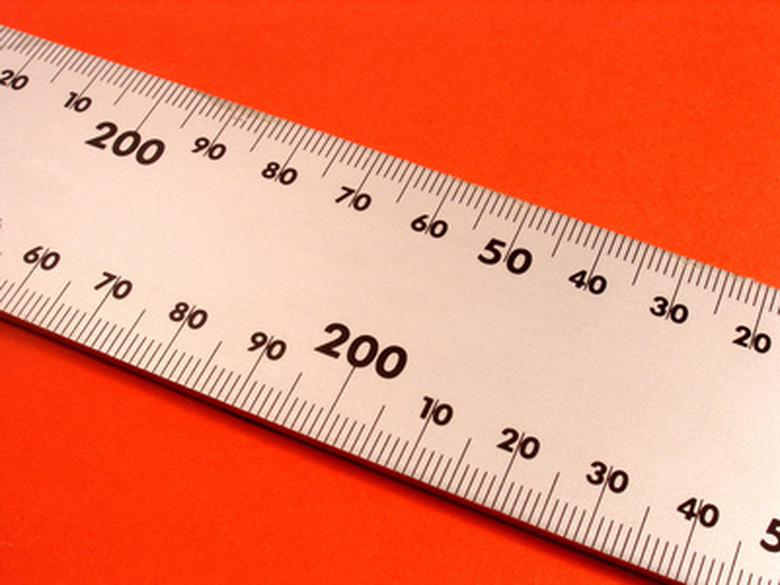How To Calculate The Accuracy Of Measurements
Science is largely based on quantifiable data. Collecting useful data in turn relies on measurements of some sort, with mass, area, volume, speed and time being a few of these critically important metrics.
Clearly, accuracy, which describes how closely a measured value approximates its true value, is vital in all scientific endeavors. This is true not only for the most obvious, in-the-moment reasons such as needing to know the temperature outside in order to dress properly but because the inaccurate measurements of today lead to the accumulation of bad data in the long term. If the weather data you collect right now is wrong, the climate data you peruse about 2018 in the future will also be wrong.
To determine the accuracy of a measurement, it is usually necessary to know the true value in nature of that measurement. For example, a "fair" coin flipped a very large number of times should come up heads 50 percent of the time and tails 50 percent of the time based on probability theory. Alternatively, the more reproducible a measurement is (that is, the greater its precision) the more likely the value is to be close to the real value in nature. If estimates of someone's height based on the testimony of 50 eyewitnesses all fall between between 5'8" and 6'0", you can conclude with more certainty that the person's height is close to 5'10" than you could if the estimates ranged between 5'2" and 6'6", despite the latter giving the same 5'10" average value.
To determine the accuracy of measurements experimentally, then, you must determine their deviation.
Collect as Many Measurements of the Thing You Are Measuring as Possible
Collect as Many Measurements of the Thing You Are Measuring as Possible
Call this number N. If you are estimating the temperature using different thermometers of unknown accuracy, use as many different thermometers as possible.
Find the Average Value of Your Measurements
Find the Average Value of Your Measurements
Add together the measurements and divide by N. If you have five thermometers and the measurements in Fahrenheit are 60°, 66°, 61°, 68° and 65°, the average is
\(\frac{60 + 66 + 61 + 68 + 65}{5} = \frac{320}{5} = 64°\)
Find the Absolute Value of the Difference of Each Individual Measurement from the Average
Find the Absolute Value of the Difference of Each Individual Measurement from the Average
This yields the deviation of each measurement. The reason an absolute value is necessary is that some measurements will be less than the true value and some will be greater; simply adding together the raw values would sum to zero and indicate nothing about the measurement process.
Find the Average of All the Deviations by Adding Them Up and Dividing by N
Find the Average of All the Deviations by Adding Them Up and Dividing by N
The resulting statistic offers an indirect measure of the accuracy of your measurement. The smaller a fraction of the measurement itself the deviation represents, the more likely your measurement is to be accurate, although it is necessary to know the true value to be absolutely confident of this. Thus, if possible, compare the result to a reference value, such as, in this case, official temperature data from the National Weather Service.
Cite This Article
MLA
Beck, Kevin. "How To Calculate The Accuracy Of Measurements" sciencing.com, https://www.sciencing.com/calculate-accuracy-measurements-6391160/. 2 November 2020.
APA
Beck, Kevin. (2020, November 2). How To Calculate The Accuracy Of Measurements. sciencing.com. Retrieved from https://www.sciencing.com/calculate-accuracy-measurements-6391160/
Chicago
Beck, Kevin. How To Calculate The Accuracy Of Measurements last modified March 24, 2022. https://www.sciencing.com/calculate-accuracy-measurements-6391160/
